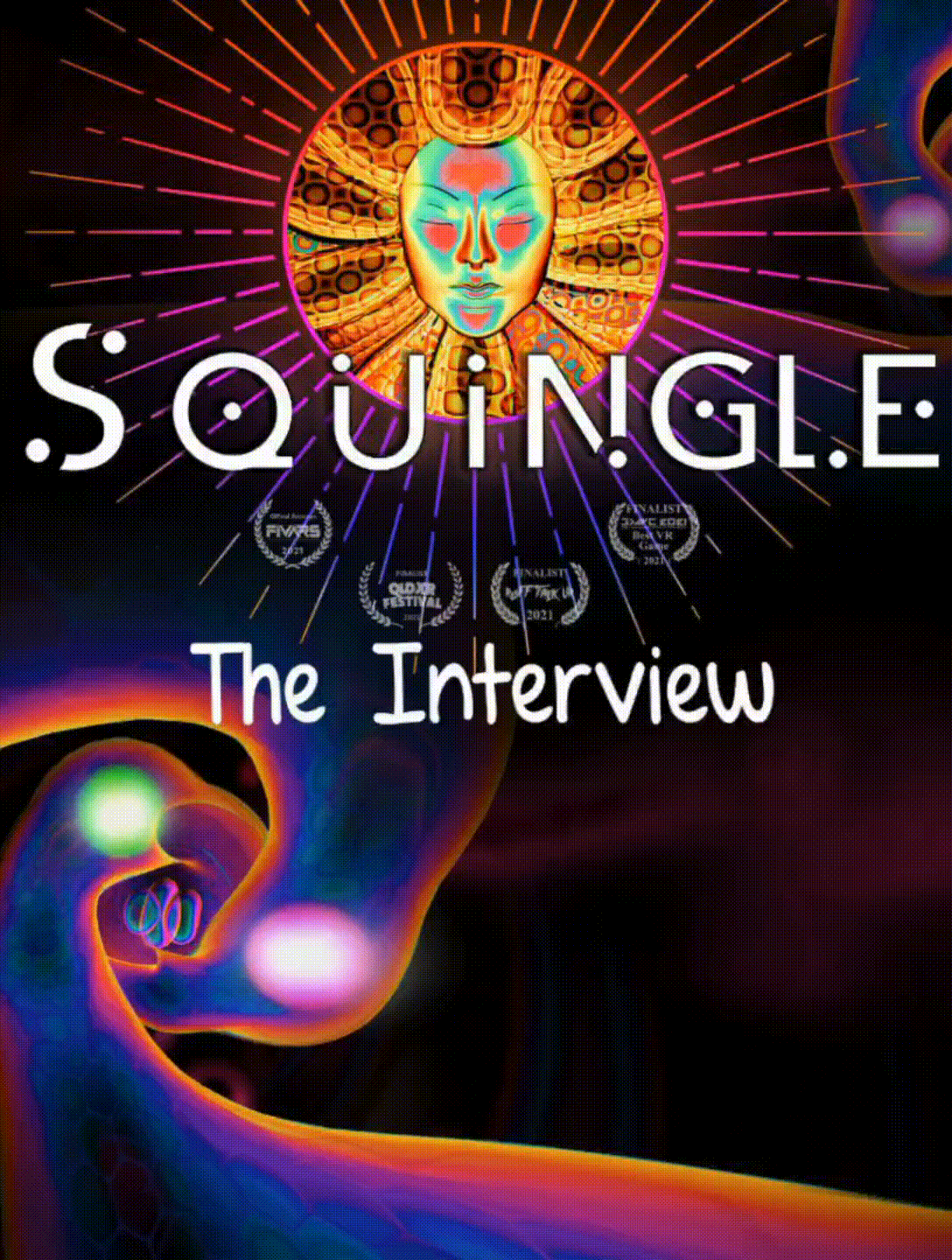Imagine what life was like before now. In fact, what do you think the universe looked like before it all began? Would it have been this empty canvas just waiting for it to be formed or was it always the plan? But what if you had a chance to help create the universe? What would you create in it or how would you change it for the better? It’s always great to think about the possibilities and to imagine how, if we did have just that chance, we could make the change. So when I heard that developer Ben Outram had made a psychedelic puzzle game where you grab revolving orbs and guide them through twisting liquid crystal mazes to help create the universe, I had to know more. So I reached out to learn more about the game, Squingle, and also get some thoughts on Virtual Reality.

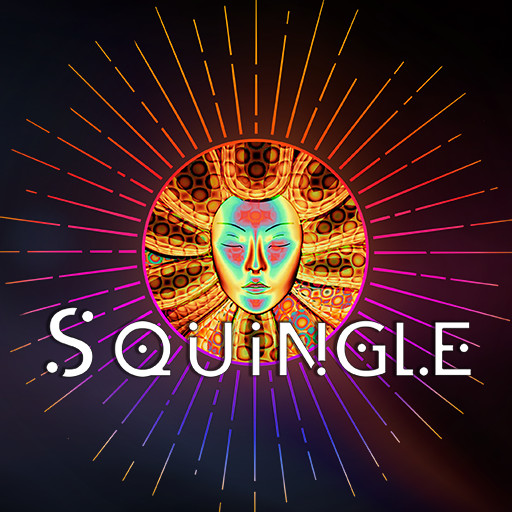
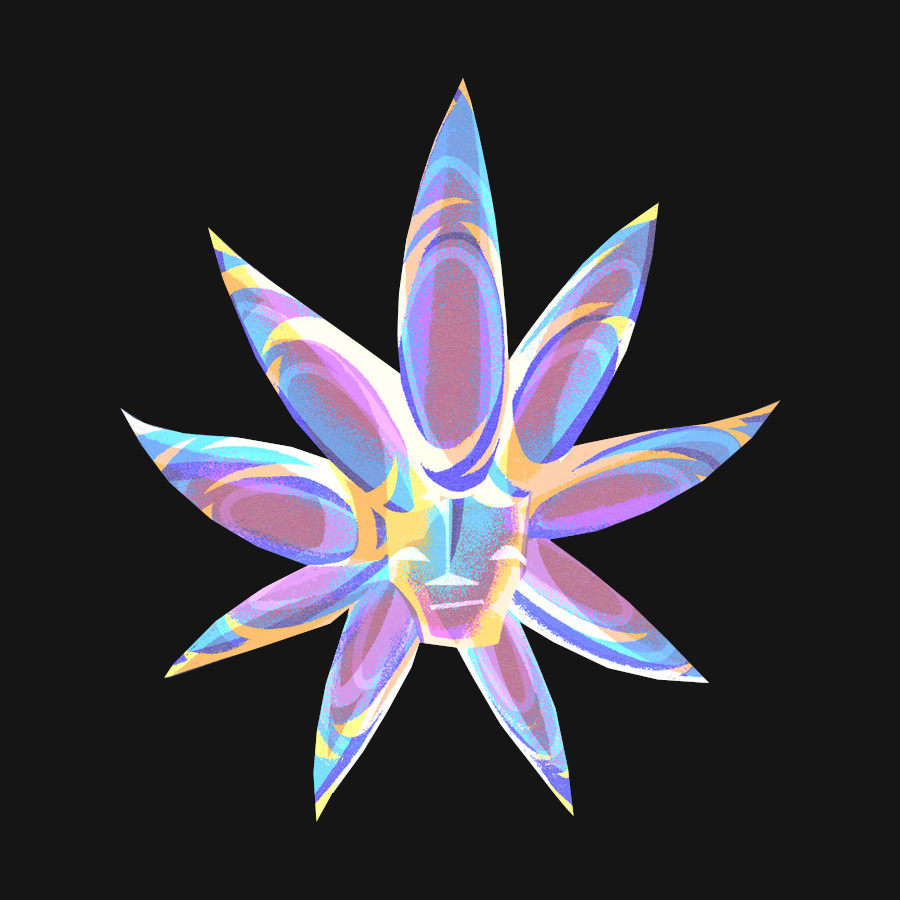
_____________________________________
Interview with developer Ben Outram of Squingle Studios
_____________________________________
Welcome to THE VR DIMENSION. Would you please introduce yourself and what you do at Squingle Studios?
“Sure. I run Squingle Studios and am the creator of Squingle (which, incidentally, is Squingle Studios’ first and only project so far!). I’m from England and did a Masters degree in Physics before completing a Ph.D. at Oxford in Engineering Science. After that, I went to Japan on a Daiwa Scholarship to study Japanese, before ending at Keio Media Design in Tokyo to do a Post Doc. It was during this time that I encountered virtual reality, developing experiments and experiences on the Oculus DK2.
Keio Media Design is famous for inventing whacky technology ideas, from robotics and telexistence, to virtual reality haptic devices. I was given complete freedom to try different things, some more successful than others!”
Your previous project included the psychedelic sound rippling experience called Crystal Vibes feat. Ott was an official selection of the Sundance Film Festival. What can you tell us about it and what is the one thing that has really stuck with you that you hold closest to your heart about the experience?
“During my Ph.D., I worked on liquid crystal display technology. Liquid crystals are this trippy beautiful phase of matter that they don’t tell you about in school, that is halfway between being liquid and crystalline. I spent days looking at these down microscopes, entertaining myself in their displays of trippy flowing patterns and colors. You can still see many photos I’ve taken of liquid crystals for a book I wrote on my website, and a proud moment was collaborating with Max Cooper, an electronic musician and one of my favorite artists, on a music video featuring videos of the liquid crystals.
To understand what you are looking at down the microscope, you have to understand how a spectrum of light results in the colors that we see. We had algorithms that could calculate what RGB values correspond to different spectra of light, and in a moment of inspiration, I wondered what it would be like if you mapped a spectrum of sound to one of light and visualized it as a color. That led me to write a bunch of apps (still available for smartphones today!) that use the color of the sound for visualizers, paint programs, mood lights, and voice visualization.
I created an experiment to see if sound visualization in VR, especially of your own voice, could increase people’s sense of presence – that feeling that you are somewhere, rather than just looking at images on a screen – in virtual reality. This was a hot topic in VR academia circles in the early 2010s. The theory is that your sense of presence is enhanced when more sensory stimuli – visual, haptic, and auditory – provide consistent information about your real or virtual environment. I hypothesized that mapping senses in unusual ways, such as audio visualization, could improve your sense of presence in VR – a bit like lasers and lighting in clubs enhances your feeling of connection to the music.
Although I didn’t get conclusive results from my basic study, the work was noticed by the wider team. We had a collaboration with Enhance Games – the makers of Rez Infinite and Tetris Effect. They had invented a full-body haptic vibration suit and wanted to explore how VR could be used with it. So, I created Crystal Vibes feat. Ott to work with the suit and explore 3 modalities of how haptics could be used – as a metaphor for touch; as a symbol of an event (eg, getting a text message); or as a sensory substitution of sound. You can still get Crystal Vibes on Steam!
Creating this had a profound effect on me because I realized that a) VR is a great tool for making super trippy experiences and b) I was uniquely positioned, having a physics background, to create them. Taking the experience to Tokyo Game Show, Sundance Film Festival, and others, and having the opportunity to meet and spend time with Tetsuya Mizuguchi, the creative director of Rez, was a childhood dream come true (although I was pretty star-struck every time I spoke with him!).”
Growing up, what have been some of your best gaming moments and what was that one VR moment that really drew you into Virtual Reality?
“I was a massive gamer as a kid and growing up. Starting with Mario World and Zelda on the Super Nintendo, mega drive games, then onto the N64, GameCube, Dream Cast, PS2, Wii, etc. Nintendo has always been my home – I’m slightly obsessed with the character Yoshi.
When it comes to VR – it’s always fascinated me. I love metaphysical concepts in the Matrix, Buddhism, and lucid dreams. It really hit home when I tried a random demo by Isaac Cohen (aka Cabbibo) – where he was using signed distance function (SDF) shader wizardry to create smooth fluid VR trip toys. I think this was a key moment for me. I’ve since tried learning about SDFs, and they are used in some form in Squingle.”
Your latest game came out last year called Squingle. What can you tell us about it?
“Squingle is a psychedelic VR puzzle game where you must guide a pair of constantly revolving orbs through a series of cosmic intestinal iridescent mazes to reach a goal. Along the way, you encounter a psychedelic Goddess of sorts, whose sometimes paradoxical guidance brings you through a story of transcendence. The premise is that by solving the puzzles, outside of time and space, you are helping Squingle create, sustain, and actualize the ultimate purpose of existence.
Squingle is a game of skill and puzzle solving – and it’s designed with VR at its core. All the action takes place in 3D in front of you, making full use of the 6DOF tracking affordances of VR. Everything in Squingle is iridescent, like beetles and butterflies, giving things an otherworldly feel, and they refract the background like glass. Everything responds to your every move and touch, with puzzles squidging out as you pass through them. It has been compared to a cosmic colon, giving birth, or brain neurons. The haptics, sound, and visuals combine to give you a sense of feeling your way through the puzzles, like through a balloon or bubble. And while the main goal is to complete the levels, there are also objects to collect in more challenging-to-reach places. You can compete to complete the game fast, racing your ghost and placing on the leaderboards., so Squingle would be a perfect game for speedrunning. And finally, the incredible work Cai Jones did on the music and audio design works so perfectly with the gameplay and themes.”
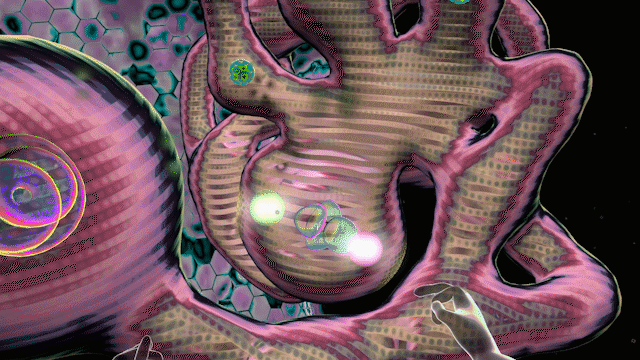
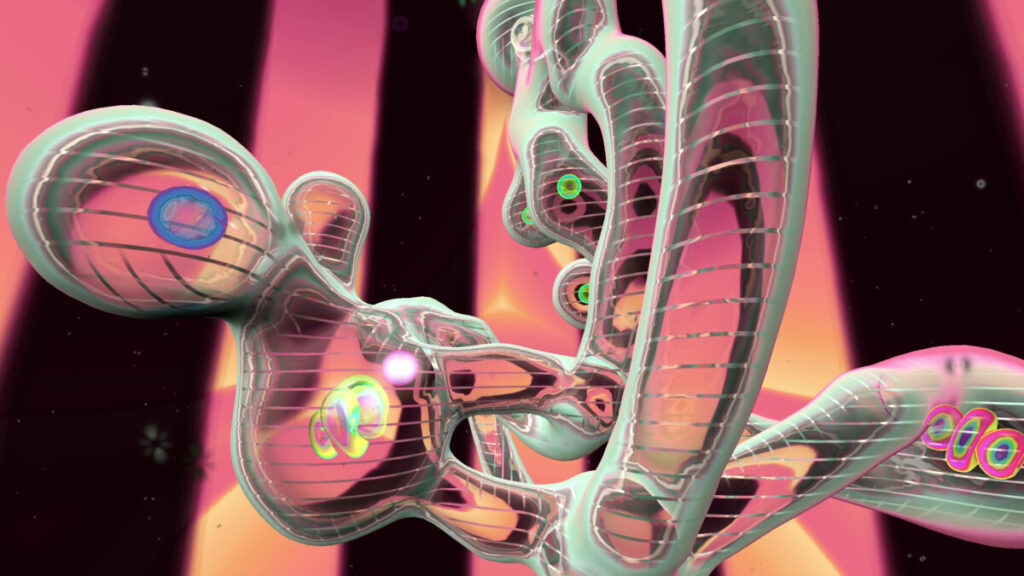
The game is about psychedelic puzzles. What can you tell us about the puzzles and which one is your favorite?
“Squingle’s levels are inspired in part from juggling – which is a hobby of mine. I have created a few VR juggling simulators and games, which you can find on my website and AppLab, but these prototypes didn’t go too far. Juggling is hard – in the real world and in VR! So I wanted to simplify juggling to make a more engaging and easier game for VR.
With 3 ball juggling, there are a lot of patterns and topologies that you can do – in fact, there are papers written about the topology of juggling and how it relates to, for example, braids and knots. In the same way, there is a large design space for two orbs, as in Squingle, where the balls can play out their topologies through the shape of the puzzles: a sort of temporal-spatial mapping of the logic of the Universe. I spent a lot of time inside VR after creating an in-VR level editor, playing with the topological space, and figuring out the most engaging of structures and puzzles.
I love some of the more difficult puzzles where you must guide the revolving orbs through helical structures reminiscent of DNA, and there are some tricky ones where you have to figure out the order in which to hit the rotation-direction modifiers. I like those.”
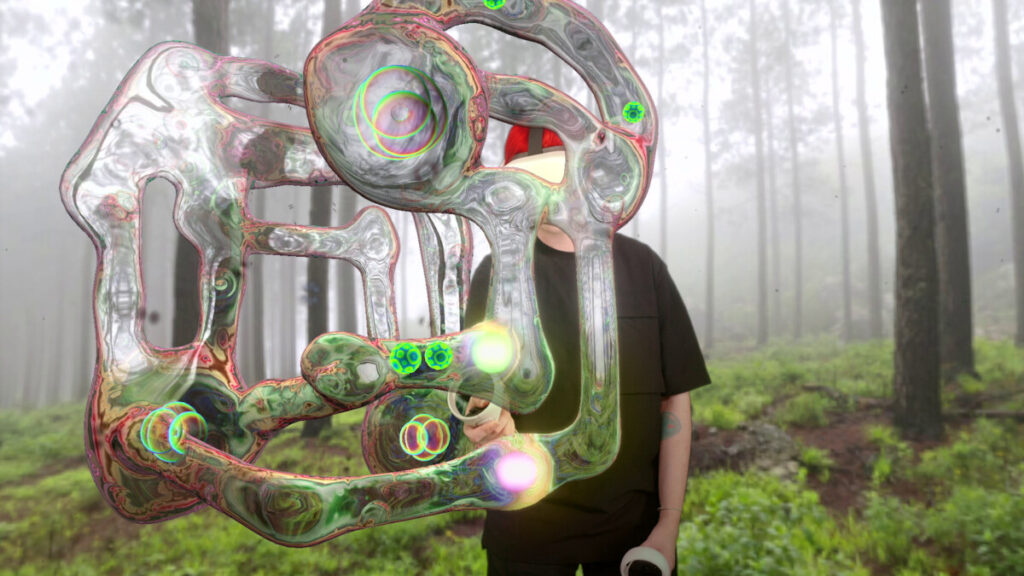
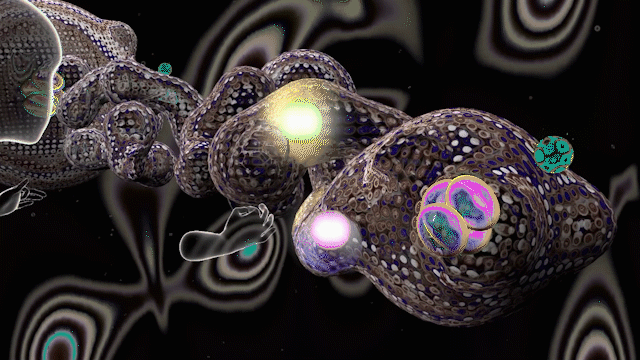
About how many different puzzles are in the game?
“100.”
Have you looked at the leaderboards in Squingle and have you been amazed about some of the times that are listed as well as have you tried to beat the times?
“Ha ha, yes. I first released a demo with a leaderboard for the Steam Next Festival. It got really heated on there and I couldn’t beat a couple of the times. These early adopters really helped to play-test the game and discovered several exploits that would allow players to cheat (which I have since fixed!). I hope more in the speedrunning community will set records for completing the game in record time.”
Was there ever a thought or is there a possibility, that user-created puzzles can be added with those puzzles having leaderboards?
“This is something I’d love to implement. It would require a lot of work though – currently, the levels are created using an SDF visualizer on a high-performance gaming PC, and this wouldn’t work on Quest. The level meshes are then processed and cleaned using 3D modeling software. It may be that all this could be optimized for a Squingle 2? But it isn’t the priority on the roadmap now.”
For someone just getting started, what are some of your best tips that you can share?
“Remember, sometimes you must change the rotation direction by hitting blue or red orbs in order to pass certain sections. If you find the game difficult on Normal, then try using the ‘Easy Play’ option.
For the advanced player, remember that using ‘A’ or ‘X’ buttons speeds you up. If you keep holding it, the balls will rotate faster and faster and faster – which helps those trying to beat levels in blindingly fast record times.”
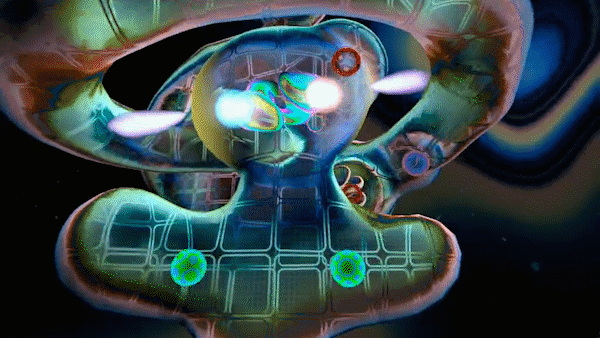
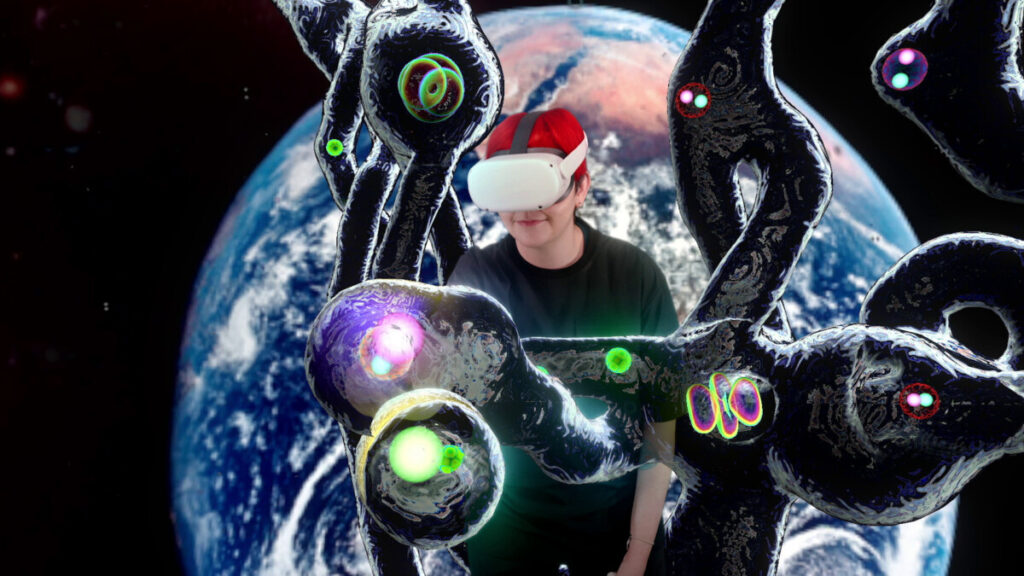
What do you think it is about Virtual Reality that makes Squingle work so perfectly?
“Thanks for the kind words! I think maybe the reason Squingle is liked by players and critics alike, is that it takes a risk and is built upon careful considerations of VR’s affordances. There is no simulator-sickness-inducing movement, the gameplay is constant and not disjointed by teleporting or loading times, and the 3D tracking, haptics, and stereo iridescence maximally utilize the affordances of VR. It is a game that just wouldn’t work on a flat screen – and it doesn’t try to just emulate the success of standard video game genres. Squingle has an instantly intuitive game mechanic modeled on the joy of juggling and flow toys. You don’t need buttons; you just need to feel the movement and get into the vibe.”
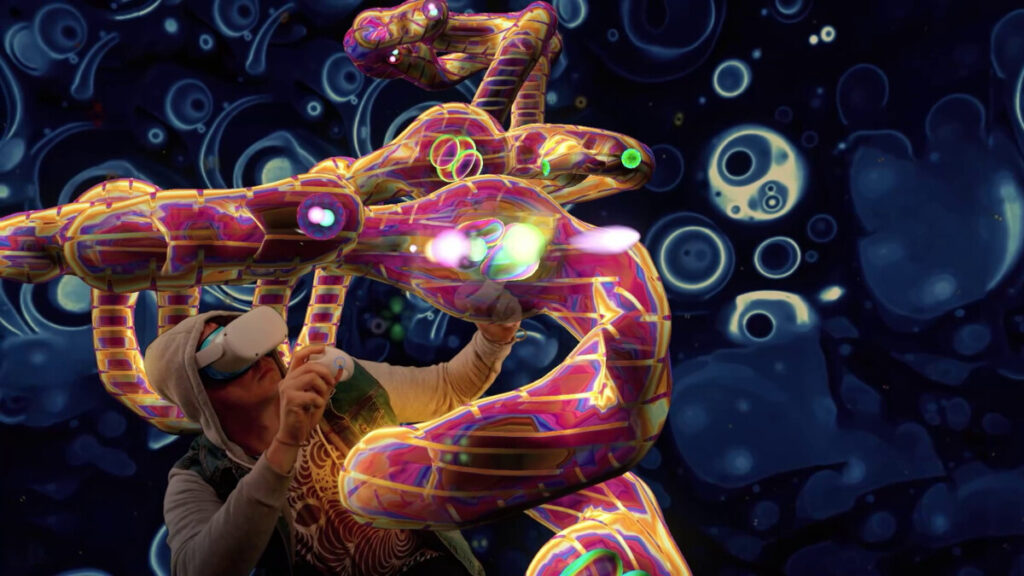
When working with Virtual Reality, what are your top three boxes that have to be checked off in order to be part of a Ben Outram project?
“Beautifully out of this world in visual quality, metaphysical in theme, and based on joyful physics.”
When it comes to VR, do the visuals or the sound come first for you?
“I think it’s best when these two are in love with each other – the closer they synchronize and reflect each other, the better.’
Squingle is out for the Quest platform and Steam VR. Are there any plans to release the game on other platforms such as PlayStation VR/2 or Viveport in the future?
“Yes indeed! Two partnerships are confirmed and I’m in talks with several others. I hope we can bring Squingle to as wide of an audience as possible so watch this space. I’m particularly excited by the new hardware features of future headsets; hand and eye-tracking, color passthrough, and more powerful chips.”
If you walked through the door into THE VR DIMENSION, and your life was one of the puzzles in Squingle, what do you think it would look like and what would be your sound?
“It would probably be inside out and wobbly, I’d like to think emanating compassion and loving kindness to all beings – but I think I have a ways to go before that happens. More realistically, it would be cold and on the floor, reaching out like a slime mould.”
With the VR content continuing to grow, what would you say to someone as to why they should experience Squingle?
“There are many gems out there if you can look past the marketing hype – Gibbys Guide is a great independent round-up of VR experiences on Quest so I’d start there. But I think Squingle would be the perfect first VR game that people play. It’s really designed to make the most of VR, it’s uncomplicated, intuitive, and accessible for the widest audience. It doesn’t make you feel sick! And it currently has the highest user rating of any Quest game on the entire Quest ecosystem (albeit only slowly getting user reviews!). It’s a game that you can easily play and show friends and family, and I hope will create a sense of wonder for the power and future of VR. Have a read of Squingle’s user reviews on the store page 😉, and I’m proud of how people are enjoying the game and the things people have been saying about the experience.”
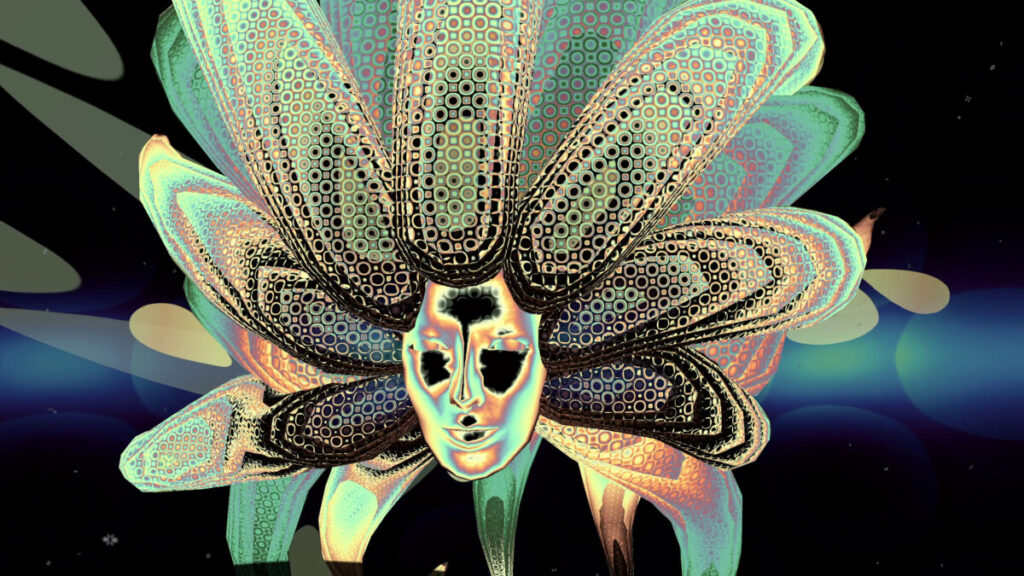
I want to really think Ben for giving us a closer look into Squingle and for talking about Virtual Reality.
Squingle is out now for the Quest/2 via Oculus App Lab on the Oculus Store and on Steam VR.
To learn more about Squingle Studios, please visit their site, like them on Facebook, follow them on Twitter, follow them on Instagram, and subscribe to their YouTube channel.
In case you missed the trailer, please enjoy.
